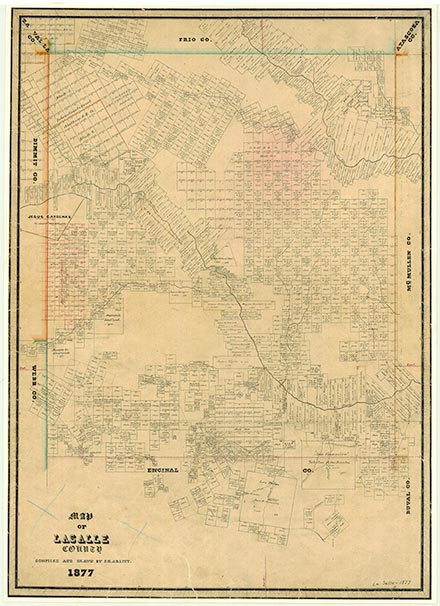Fort Ewell

Fort Ewell was located on the south bank of the Nueces River at the crossing of the San Antonio-Laredo Road in what is now La Salle County. Gen. Persifor F. Smith, commander of the Eighth Military Department responded to American Indian raids and filibustering actions by Jose María De Jesús Carbajal in the South Texas borderlands by establishing a new fort between the Rio Grande and Nueces River. General Smith and his party left Fort Merrill on April 25, 1852; his party consisted of an escort of Capt. Andrew J. Lindsey and Bvt. Capt. Gordon Granger and thirty men of the Mounted Rifles accompanied by Bvt. Lt. Martin Luther Smith of the Topographical Engineers. General Smith described the new post as unconventional due to terrain and purposes. He described the location of the fort as hard ground that approached within a few yards of the Nueces River with a grove of Elm trees at the bottom. Fort Ewell’s position commanded the crossing of the roads from Eagle Pass, Laredo, Corpus Christi, San Antonio, and Fort Inge. The post was named for Lt. Thomas Ewell, who was president of a small school in Tennessee and later served during the Mexican War in the newly-formed Regiment of Mounted Rifles. Ewell was killed in the battle of Cerro Gordo on April 18, 1847, while leading Company F, which later founded the fort that bore his name.
Fort Ewell was established on May 18, 1852, and was garrisoned by Capt. Andrew J. Lindsey and Companies F and H of the Regiment of Mounted Rifles. Within the first month the fort’s population grew from 149 men to 492 men, which would be the largest population during its operation. When Bvt. Col. William W. Loring took command of Fort Ewell from Captain Lindsey and Bvt. Lt. Col. Andrew Porter, the garrison included other officers of Companies B, C, D, E, F, G, and H. The command staff of the Mounted Riflemen left the post on July 1, 1852, for Fort Merrill only to return on July 19. According to Order No. 23 on July 28, 1852, Bvt. Col. William W. Loring became commander of the units in the Rio Grande frontier, a sub-district of the Eighth Military Department. While trying to enforce the Neutrality Law in Texas, General Smith wrote an official report in July 1852 that cited reasons for “profilibustering propaganda” that filled newspapers. Smith also cited some Texans’ desire for revenge on Mexicans for previous acts, plotted invasions by slave owners to reclaim fugitive slaves who took refuge in Mexico, and the restlessness of mustered-out Texas Rangers. He pointed out that smugglers violated customs regulations and filibustering activities took attention away from the smuggling. General Smith hoped the U. S. government would establish more camps and forts as a preventative measure to stand against filibustering movements.
Art Leatherwood, William V. Scott | © TSHA

Adapted from the official Handbook of Texas, a state encyclopedia developed by Texas State Historical Association (TSHA). It is an authoritative source of trusted historical records.

- ✅ Adoption Status:
- This place is available for adoption! Available for adoption!
- Adopted by:
- Your name goes here
- Dedication Message:
- Your message goes here
Belongs to
Fort Ewell is part of or belongs to the following places:
Currently Exists
No
Place type
Fort Ewell is classified as a Town
Associated Names
- (Guajoco)
Has Post Office
No
Is Incorporated
No
